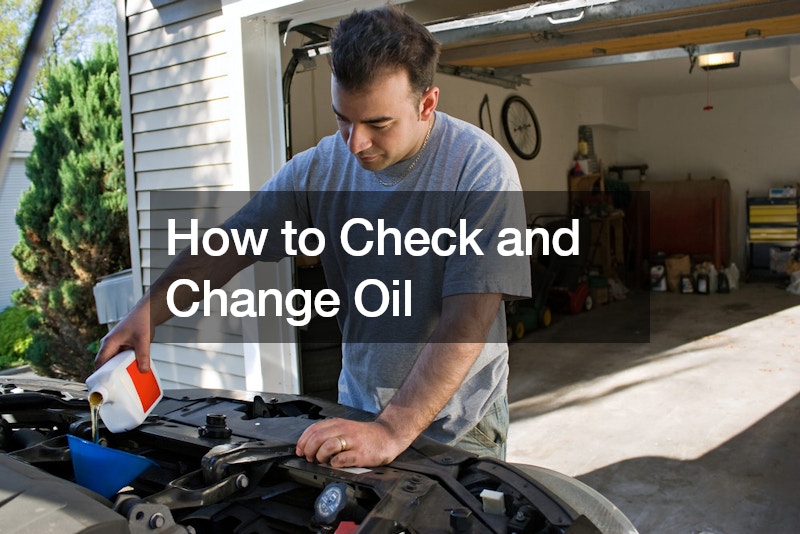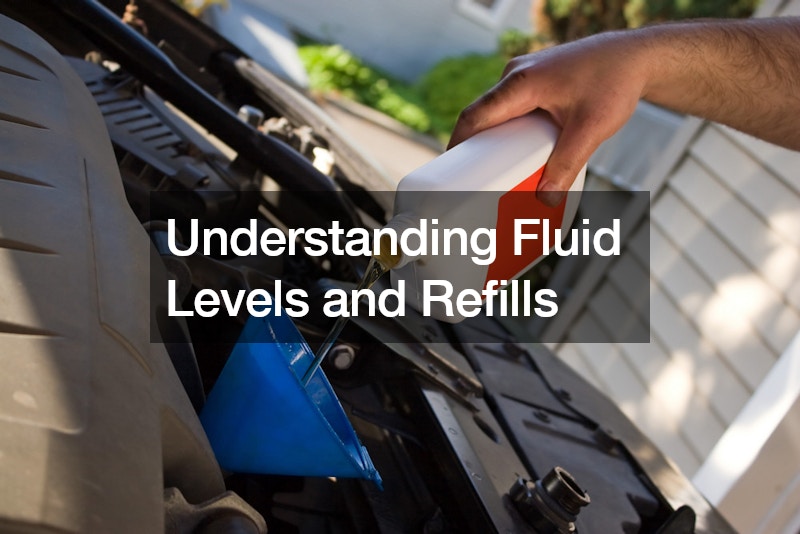How to Teach Your Teen to Care for Their Vehicle
Introduction
Teaching your teenager how to care for their vehicle is a significant milestone in preparing them for independence and responsibility. Beyond just being able to drive, understanding how to maintain a car ensures their safety on the road and protects the investment made in the vehicle. This comprehensive guide aims to equip both you and your teen with essential knowledge and practical tips to foster confidence and competence in vehicle maintenance.
Owning a car comes with responsibilities beyond fueling up and driving. Proper maintenance not only enhances the lifespan of the vehicle but also contributes to its overall performance and safety. By instilling good habits early on, you empower your teen to take proactive steps in caring for their vehicle, which will serve them well into adulthood. Understanding the basics of vehicle care also helps them appreciate the financial implications of neglect versus proactive maintenance, as regular upkeep can significantly reduce long-term repair costs.
1. Why Regular Vehicle Maintenance is Important

Regular maintenance is the cornerstone of vehicle longevity and reliability. It involves more than just changing oil; it includes inspecting and replacing worn-out parts, checking fluid levels, and ensuring all systems are operating optimally. An experienced automotive service technician will emphasize that adhering to a maintenance schedule recommended by the vehicle manufacturer prevents small issues from turning into major repairs. This proactive approach not only saves money but also ensures your teen’s safety on the road.
Furthermore, regular maintenance contributes to vehicle safety by addressing potential issues before they compromise performance. For instance, worn brake pads can impair braking efficiency, while low tire tread can compromise traction. Addressing these issues promptly through routine inspections and servicing minimizes the risk of accidents and breakdowns. By educating your teen on the importance of regular maintenance, you empower them to take charge of their vehicle’s care and safety.
2. Understanding Basic Car Components
A fundamental understanding of basic car components empowers your teen to identify potential issues and communicate effectively with auto repair companies. The engine, for example, is the heart of the vehicle and requires regular attention to oil changes, filter replacements, and overall performance checks. Understanding how the engine works and how to maintain it ensures efficient operation and prevents costly repairs. Similarly, the transmission system is critical for transferring power from the engine to the wheels, and regular fluid checks and maintenance are essential to ensure smooth gear shifts and longevity.
The battery, essential for starting the vehicle and powering electrical systems, needs periodic inspection to ensure it remains charged and free from corrosion. Teaching your teen about these components and their maintenance requirements not only enhances their understanding of vehicle mechanics but also instills confidence in handling routine upkeep. This knowledge equips them to detect early signs of potential issues and take preventive measures, contributing to the overall reliability and performance of their vehicle. Look into local auto paint shops.
3. How to Check and Change Oil

Oil is the lifeblood of the engine, lubricating moving parts and dissipating heat. Volvo car repairs professionals recommend checking oil levels regularly to ensure proper lubrication and engine health. Your teen should locate the oil dipstick, pull it out, wipe it clean, reinsert it, and then check the oil level against the dipstick markings. Understanding when to change the oil is equally crucial, as old oil can become contaminated with dirt and debris, leading to engine wear and reduced performance. Contact an auto repair company.
Changing the oil involves draining the old oil, replacing the oil filter to prevent contaminants from circulating, and adding fresh oil according to the manufacturer’s specifications. This task can be accomplished with basic tools and a bit of guidance, making it an excellent opportunity for hands-on learning. Teaching your teen how to perform oil changes not only saves money on service costs but also empowers them to take proactive steps in maintaining engine efficiency and longevity.
By emphasizing the importance of regular oil changes and providing practical guidance, you prepare your teen to take responsibility for their vehicle’s essential maintenance tasks. This foundational skill not only promotes vehicle reliability and performance but also instills a sense of ownership and pride in caring for their car.
4. The Importance of Tire Maintenance
Tire maintenance is crucial for vehicle safety, handling, and fuel efficiency. Auto transmission repair experts emphasize the importance of checking tire pressure regularly using a reliable gauge and adjusting it to the recommended psi indicated on the tire placard or owner’s manual. Properly inflated tires improve traction, reduce rolling resistance, and enhance fuel efficiency, saving money at the pump. Regularly rotating tires promotes even wear patterns, extending tire life and improving overall handling and braking performance.
Inspecting tires for signs of wear, such as tread depth and sidewall damage, is essential for identifying potential safety hazards. Worn-out tires compromise traction and stability, especially in adverse weather conditions. Teaching your teen how to recognize these signs and when to replace tires ensures they prioritize safety and maintain optimal vehicle performance throughout their ownership.
5. Understanding Fluid Levels and Refills

Monitoring fluid levels is critical to ensuring the proper operation of vehicle systems and components. Regularly checking and replenishing fluids such as engine oil, coolant, brake fluid, power steering fluid, and windshield washer fluid is essential for maintaining vehicle functionality and performance. Auto repairs professionals recommend checking fluid levels according to the manufacturer’s specifications and addressing any leaks or low levels promptly to prevent mechanical issues and potential damage.
Refilling coolant, for example, helps regulate engine temperature and prevents overheating, especially during hot weather or heavy driving conditions. Brake fluid ensures responsive braking performance and safety, while windshield washer fluid ensures clear visibility in all weather conditions. By educating your teen on the importance of fluid maintenance and providing hands-on guidance, you empower them to take proactive measures in caring for their vehicle and ensuring its reliability on the road.
6. How to Monitor and Replace Lights
Properly functioning lights are crucial for visibility and safety while driving. Teaching your teen how to inspect and replace faulty lights, including headlights, tail lights, brake lights, and turn signals, ensures they can maintain optimal visibility in various driving conditions. Auto upholstery repairs professionals recommend periodically cleaning light covers to remove dirt and haze, which can diminish light output and visibility at night. Regularly replacing bulbs before they burn out ensures consistent lighting performance and compliance with traffic laws.
In addition to exterior lights, maintaining interior lights and dashboard indicators ensures clear visibility of essential information while driving. Educate your teen about the importance of checking lights regularly and replacing them promptly to enhance safety and maintain legal compliance on the road.
7. How to Maintain the Car’s Interior

The interior of the vehicle plays a significant role in comfort, functionality, and overall enjoyment of the driving experience. Teaching your teen to keep the interior clean and organized promotes a sense of pride in vehicle ownership and preserves its resale value. Regular vacuuming of carpets and upholstery removes dirt, debris, and allergens that can accumulate over time. Wiping down surfaces with a suitable cleaner and protecting them with UV-resistant products or auto upholstery repairs services helps prevent fading, cracking, and premature wear.
Protecting upholstery from spills and stains with seat covers or mats is essential for maintaining a clean and attractive interior. Regularly inspecting and ensuring the functionality of interior controls, such as air conditioning, heating, audio systems, and dashboard indicators, enhances driving comfort and convenience. By instilling good habits in interior maintenance, you help your teen create a pleasant and functional environment inside their vehicle, ensuring it remains a comfortable space for both daily commutes and longer journeys.
8. Seasonal Maintenance Tips
Adapting maintenance routines to seasonal changes optimizes vehicle performance and safety throughout the year. Winter maintenance focuses on preparing for cold weather conditions by checking and possibly replacing worn-out tires for better traction on snow and ice. Auto brake replacement specialists recommend inspecting and possibly replacing brake pads and rotors to ensure reliable stopping power in slippery conditions. Summer maintenance includes checking cooling system components, such as radiator and hoses, to prevent overheating during hot weather.
Spring and fall are ideal seasons for general inspections and maintenance tasks, such as checking fluid levels, battery condition, and wiper blades. These transitional periods provide an opportunity to address any issues before they escalate and prepare the vehicle for upcoming seasonal challenges. By teaching your teen the importance of seasonal maintenance and providing guidance on specific tasks, you empower them to take proactive steps in caring for their vehicle year-round.
9. How to Recognize and Address Common Issues
Empowering your teen to recognize and address common vehicle issues enhances their confidence and safety on the road. Understanding dashboard warning lights and their meanings helps your teen identify potential problems, such as low tire pressure, engine overheating, or brake system malfunctions. Collision repair centers emphasize the importance of addressing issues promptly to prevent further damage and ensure vehicle reliability.
Unusual noises, such as squealing brakes or grinding sounds, may indicate worn brake pads or transmission problems, requiring immediate attention from a qualified technician. Teaching your teen when to seek professional help and how to communicate effectively with automotive repair professionals ensures they understand the limits of DIY maintenance and prioritize safety and reliability in vehicle care.
10. Teaching Good Driving Habits
Promoting good driving habits is essential for vehicle longevity, fuel efficiency, and overall safety. Encourage your teen to perform pre-driving checks, including tire inspections, fluid level assessments, and light checks, to ensure their vehicle is in optimal condition before hitting the road. Emphasize the importance of smooth acceleration, maintaining steady speeds, and minimizing sudden stops to conserve fuel and reduce wear on vehicle components.
Automotive repair experts recommend avoiding excessive idling and aggressive driving behaviors, as they contribute to increased fuel consumption and premature wear of brakes and tires. Educating your teen about the impact of driving behavior on vehicle health and environmental sustainability fosters responsible driving habits and promotes a safer, more efficient driving experience. By setting a positive example and providing ongoing guidance, you empower your teen to develop lifelong habits that contribute to vehicle longevity and reduce their environmental footprint.
11. How to Create and Follow a Maintenance Schedule
Establishing a maintenance schedule is key to ensuring consistent care and upkeep of the vehicle. Develop a routine maintenance plan that includes regular oil changes, tire rotations, fluid checks, and filter replacements based on manufacturer recommendations and driving habits. Utilize maintenance logs or smartphone apps to track service history, upcoming maintenance needs, and important dates, such as registration and inspection deadlines.
Setting up reminders and alerts for scheduled maintenance tasks helps your teen stay organized and accountable for vehicle care. Encourage them to proactively schedule appointments with automotive repair professionals for more complex services, such as brake inspections or engine diagnostics. By teaching your teen how to create and follow a maintenance schedule, you empower them to take ownership of their vehicle’s care and ensure it remains reliable and safe for years to come.
Conclusion
Equipping your teen with the knowledge and skills to care for their vehicle is an investment in their independence, safety, and future success as responsible drivers. By following the comprehensive guidance provided in this article, you empower them to develop essential maintenance habits that promote vehicle reliability, longevity, and safety. Emphasize the importance of regular maintenance, safe driving practices, and proactive problem-solving to ensure their vehicle remains a dependable mode of transportation and a source of pride for years to come.
